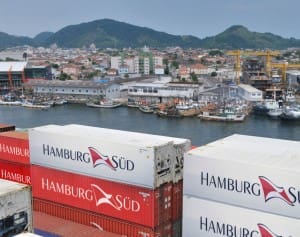PROTECTIONIST agricultural trade measures have the potential to cost the Australian economy $1 trillion over 30 years, according to an ABARES research paper released today.
The paper ‘Understanding effects of supply disruptions on globally and locally focused economies’ has concluded that despite global economic shocks like the COVID-19 pandemic, agricultural sectors and economies overall are better off when exposed to international trade.
 The research report examined the effects of exposure to the global market on supply chains, and the risks and shocks of this exposure.
The research report examined the effects of exposure to the global market on supply chains, and the risks and shocks of this exposure.
A key finding was that an interconnected open global trading system with global supply chains is better for Australian agriculture, the broader Australian economy and the world in terms of real gross domestic product, compared to a more localised world despite the risks of global supply shocks.
The paper has several key messages that help inform the policy debate around the organisation of supply chains following the COVID-19 pandemic, including that:
- Australian agricultural value-added and Australia’s GDP are higher in the long term under interconnected GVCs than under localised policies.
- Losses from foreign shocks to agricultural value-added and GDP are not substantially different under interconnected global value chains or localised policies, meaning that localised policies do not actually insulate Australia, and;
- Adopting localised policies as insurance against adverse shocks would come at a long-term cost to the Australian economy of around $1 trillion (the difference between the net present value of Australia’s GDP under interconnected GVCs and that under a localised policy scenario between 2020 and 2050).
Localised or protectionist policies would include higher tariffs, higher subsidies to local industries and reduced substitution of domestic products for imports.
Protectionism limits growth
ABARES’ acting executive director Dr Jared Greenville said domestic protections like trade barriers or subsidies might sound appealing, especially in a crisis, because they encourage domestic production.
“But they actually make economies weaker and create longer run costs for the economy,” he said.
“There is a cost to moving to a protected economy, and it also comes at the expense of growth.
“Not only does protectionism prohibit growth and cost the government money, we’ve found that it doesn’t really protect that much.
“For Australia, protectionist measures would only marginally reduce the impact on GDP in a pandemic-like event, but they have the potential to cost the economy $1 trillion over 30 years.
“There are better insurance policies out there.”
Enhancing competitiveness
Dr Greenville said discussions regarding localising supply chains or ensuring local reserves of some products should be assessed on a case-by-case basis.
“Growing local supply chains and production should focus on enhancing competitiveness with protectionist trade and domestic support policies avoided,” he said.
“Interestingly, Australia’s agriculture sector experienced fewer disruptions than other sectors during the COVID-19 pandemic.
“People still need to eat.
“Australia’s agriculture sector is export-orientated and heavily exposed to international markets, exporting around 70 per cent of agricultural produce.”
Dr Greenville said for Australia’s producers, exposure to global value chains proved to be better for market resilience.
Source: ABARES
The research paper ‘Understanding effects of supply disruptions on globally and locally focused economies’ is available on the ABARES website by clicking here.

HAVE YOUR SAY